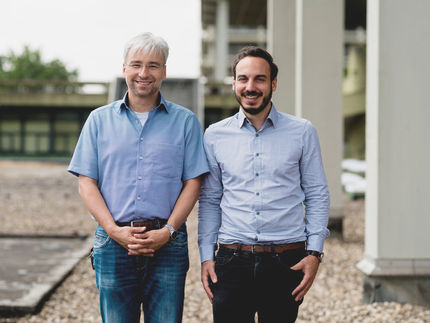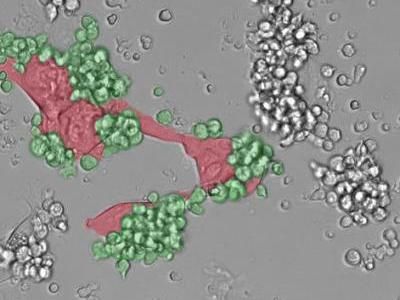'Lab on a chip' mimics brain chemistry
Johns Hopkins researchers from the Whiting School of Engineering and the School of medicine have devised a micro-scale tool - a lab on a chip - designed to mimic the chemical complexities of the brain. The system should help scientists better understand how nerve cells in the brain work together to form the nervous system. A report on the work appears in the journal Lab on a Chip.
"The chip we've developed will make experiments on nerve cells more simple to conduct and to control," says Andre Levchenko, Ph.D., associate professor of biomedical engineering at the Johns Hopkins Whiting School of Engineering and faculty affiliate of the Institute for NanoBioTechnology.
Nerve cells decide which direction to grow by sensing both the chemical cues flowing through their environment as well as those attached to the surfaces that surround them. The chip, which is made of a plastic-like substance and covered with a glass lid, features a system of channels and wells that allow researchers to control the flow of specific chemical cocktails around single nerve cells.
"It is difficult to establish ideal experimental conditions to study how neurons react to growth signals because so much is happening at once that sorting out nerve cell connections is hard, but the chip, designed by experts in both brain chemistry and engineering, offers a sophisticated way to sort things out," says Guo-li Ming, M.D., Ph.D., associate professor of neurology at the Johns Hopkins School of Medicine and Institute for Cell Engineering.
In experiments with their chip, the researchers put single nerve cells, or neurons, onto the chip then introduced specific growth signals (in the form of chemicals). They found that the growing neurons turned and grew toward higher concentrations of certain chemical cues attached to the chip's surfaces, as well as to signaling molecules free-flowing in solution.
When researchers subjected the neurons to conflicting signals (both surface bound and cues in solution), they found that the cells turned randomly, suggesting that cells do not choose one signal over the other. This, according to Levchenko, supports the prevailing theory that one cue can elicit different responses depending on a cell's surroundings.
"The ability to combine several different stimuli in the chip resembles a more realistic environment that nerve cells will encounter in the living animal," Ming says. This in turn will make future studies on the role of neuronal cells in development and regeneration more accurate and complete.
Other news from the department science

Get the life science industry in your inbox
By submitting this form you agree that LUMITOS AG will send you the newsletter(s) selected above by email. Your data will not be passed on to third parties. Your data will be stored and processed in accordance with our data protection regulations. LUMITOS may contact you by email for the purpose of advertising or market and opinion surveys. You can revoke your consent at any time without giving reasons to LUMITOS AG, Ernst-Augustin-Str. 2, 12489 Berlin, Germany or by e-mail at revoke@lumitos.com with effect for the future. In addition, each email contains a link to unsubscribe from the corresponding newsletter.






















































